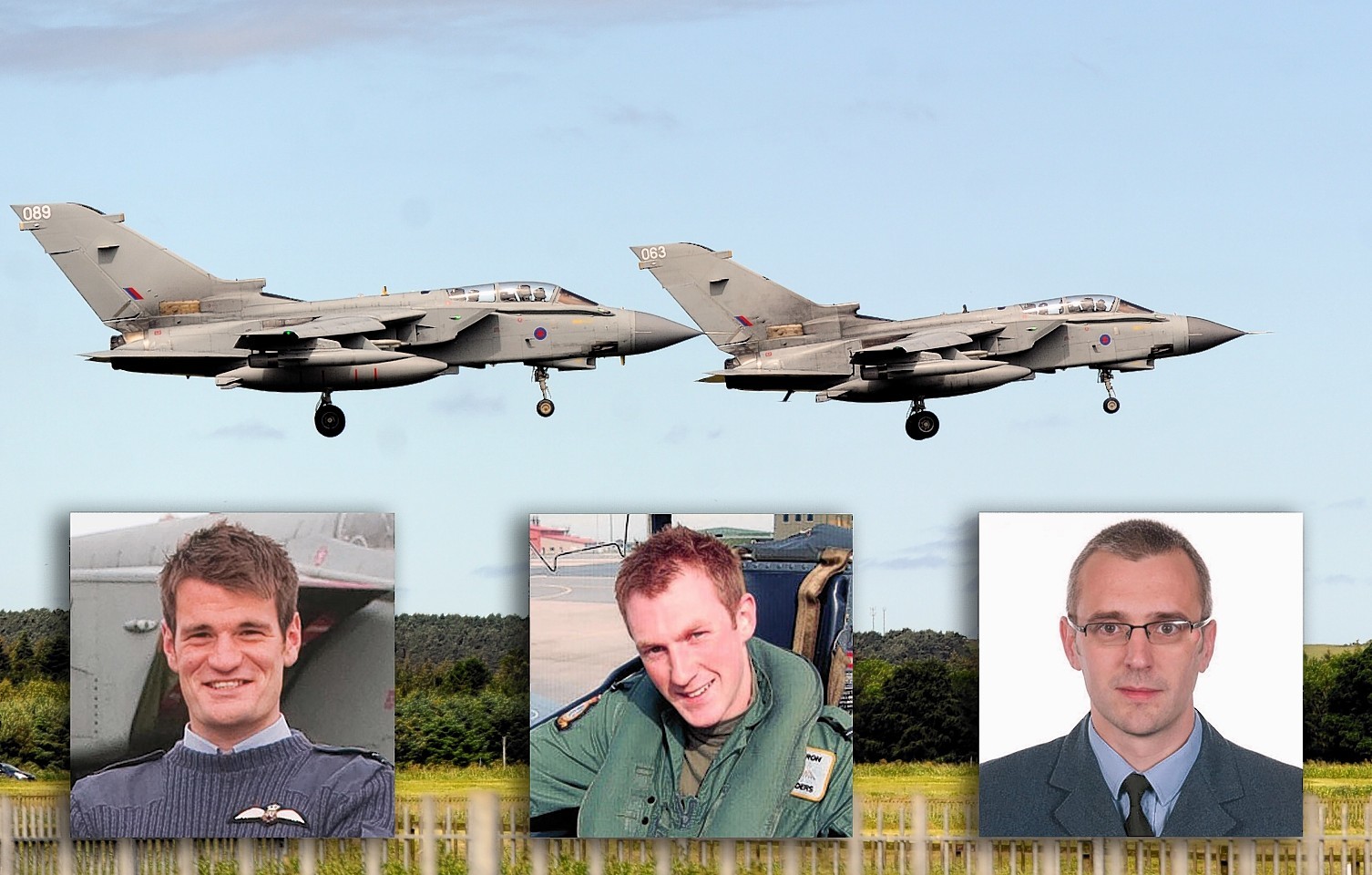A catalogue of failures have been blamed for causing the deaths of three RAF Lossiemouth pilots when their Tornado jets crashed over the Moray Firth in 2012.
The Military Aviation Authority (MAA) inquiry report into the tragedy – which was completed last year but only released this morning – raised a series of safety concerns.
The investigators identified 17 “contributory factors” – including the failure to fit a crash warning system to the jets and “ineffective” supervision of the pilots.
Further problems with the equipment and culture were also highlighted, as well as the decision-making of one of the pilots, and the weather conditions on July 3, 2012.
The inquiry’s findings and recommendations are expected to prompt heavy criticism of the Ministry of Defence, and lead to fresh calls for a fatal accident inquiry into the deaths.
The second anniversary of the collision will be marked at a ceremony at RAF Lossiemouth on Thursday.
The crash caused the deaths of Flight Lieutenant Adam Sanders, Squadron Leader Samuel Bailey and Flight Lieutenant Hywel Poole. A fourth man, who has not been named, survived
Responding to the panel’s findings, MAA director general Air Marshal Richard Garwood said: “The tragedy is that we have lost three highly professional, dedicated and capable aircrew and my sympathy goes to their families, friends and colleagues.
“As I am sure our lost crews would support, our job now is to use that we know of their final moments and the circumstances surrounding their flights to help prevent any further mid-air collisions.
“The service inquiry panel rightly identified the cause of the accident to be a ‘lack of recognition of converging flight paths which resulted in both aircraft being in the same airspace at the same time’.
“Although factually correct, I believe it somewhat simplifies the headline issue, and whilst not disagreeing with their statement, I would add that a lack of situational awareness of each others’ sortie, from the planning phase right through to the actual collision, was highly significant.”
He added: “As with many accidents, bad luck has to be part of the explanation, particularly in the closing stages when they wre belly up to each other, a few feet difference in altitude of one of the aircraft would have created a near miss rather than this tragic accident.
“Unfortunately, the final safety barrier which would have generated awareness of their close proximity did not exist as the Tornado GR4 is not fitted with a collision warning system.”
Military chiefs have previously confirmed that a collision warning system was first recommended for the Tornados in 1998 – but the equipment is not due to be fitted until December this year.
It has also emerged that the MoD temporarily cancelled the purchase of the £50million system in 2011 – despite the Military Aviation Authority warning in internal documents that delays to its installation were creating a “chronic risk”.
In a statement to parliament, Defence Minister Anna Soubry said: “A copy of the report has already been provided to relevant personnel and units in Defence to ensure the timely dissemination of these air safety lessons.
“The recommendations from the report have either been addressed or are in the process of being addressed.
“Our deepest sympathies remain with the families of those who lost their lives in this tragic accident.”
An MoD spokesman added: “The MAA service inquiry concluded that the cause of the accident in Moray Firth in 2012 was a lack of recognition of converging flight paths leading the two jets to collide in the same airspace.
“The service inquiry found that the lack of a collision warning system did not cause the accident but was one of 17 contributory factors which made it more likely to happen.
“While accidents like this are very rare, this demonstrates that military flying can never be without risk. The RAF is already implementing the lessons learnt from this tragic accident and now uses a flight planning aid to highlight potential aircraft conflicts prior to flight.
“The MoD is committed to reducing the risk of mid-air collisions and has developed a collision warning system for Tornado which is currently being trialled, and is expected to be introduced from the end of 2014.”
